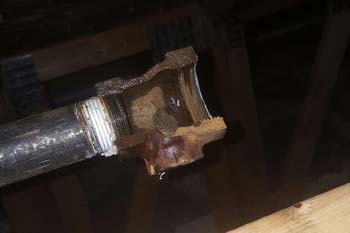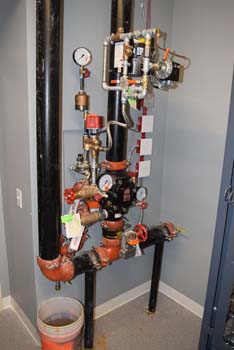A five-level apartment complex in the Salt Lake City area was in the final stages of construction when a fire-sprinkler pipe fitting located in the attic space froze, ruptured, and caused flooding in the lower floors. EIS was assigned to perform a site inspection and evaluation of the piping installation to determine if any design or installation defects caused or contributed to the loss.


The attic areas of the building were served by a dry fire-sprinkler system. Dry systems are commonly used in unheated spaces where it is expected that the piping will be exposed to sub-freezing temperatures. In such systems, the piping is filled with compressed air which keeps the main sprinkler valve from opening and allowing water to flow into the pipes. When there is a sudden drop in air pressure, for instance when a sprinkler head is activated due to a fire, the main valve opens and water flows into the system.

